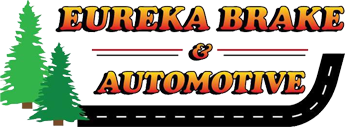When all a vehicle’s wheels are lined up exactly with each other, your wheels are in alignment. Hitting a road hazard or even just the normal bumps and bounces of everyday driving can cause your wheels to be out of alignment. This can lead to expensive premature tire and suspension wear, steering problems and poor fuel economy.
Signs Your Vehicle may need an alignment:
- The car is pulling to one side of the road.
- The tire treads are wearing out prematurely or unevenly.
- The steering wheel tilts off-center when you're driving.
Alignment basics:
The first angle is called toe: do the wheels point in towards each other or away from each other at the front of the tire?
The next angle is called camber: do the wheels tip in or out at the top?
And finally, there is castor: measures the angle where the front axles attach to the vehicle.
Alignment service starts with an inspection of the steering and suspension to see if anything’s bent, broken or worn out. The technician will then look at tire condition to see if there is any uneven wear patterns beginning to develop. From there, alignment gauges are attached to the wheels and an initial alignment reading is taken. The wheels are then aligned to manufacturer’s specifications. Last but not least, our technicians take the vehicle for the final test drive to insure that the vehicle drives straight and that the steering wheel is centered while driving.
Your owner’s manual will have a recommendation for how often your alignment should be checked. It is usually recommended every couple of years. However, if you drive on very rough roads, have found yourself slamming into one of our notorious Eureka potholes, or you ran into the curb to hard when parking your car, you might need an alignment sooner.
According to a recent Minit-tune.com article, here are a few Consequences of Waiting too Long
- Steering Problems: When wheels become out of line, they aren’t facing in the directions necessary for optimal handling. This means that you may be trying to steer straight, and the vehicle is veering in a completely different direction. The more misaligned the wheels get, the less reliable your steering will become. This can be a dangerous issue for those who are trying to drive on cramped city streets or in inclement weather. Ice, rain, and snow can make this problem even more dangerous, leading to car accidents that could’ve been avoided with a simple tune-up.
- Uneven Tire Wear: Take a good look at the tread on your tires. In a properly aligned vehicle, all the tires will have even wear in consistent spots. Your tires must be replaced regularly, but good alignment can keep them safe for a longer time. When tires are forced to experience wear on the edges or at their weakest points, they can shred and cause severe damage to the parts of the wheel and axel. This is more than just a slow leak; this is a sudden failure that can happen at high speeds leading to potentially serious accidents. Tire rotation can help, but good wheel alignment can save you time and money.
- Poor Fuel Economy: The harder your vehicle has to work to stay on the road and maintain a consistent speed, the more fuel you’re wasting, and paying for! Proper wheel alignment carries over into fuel economy and overall performance
If you suspect an alignment problem, get it checked before you suffer expensive tire or suspension damage.
Eureka Brake & Automotive <br/>707.443-2122 <br/>www.eurekabrake.com
Revised from content contributed by NAPA Service Assistant

